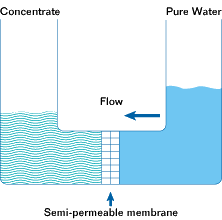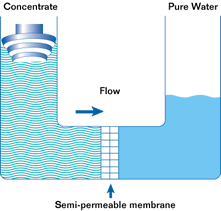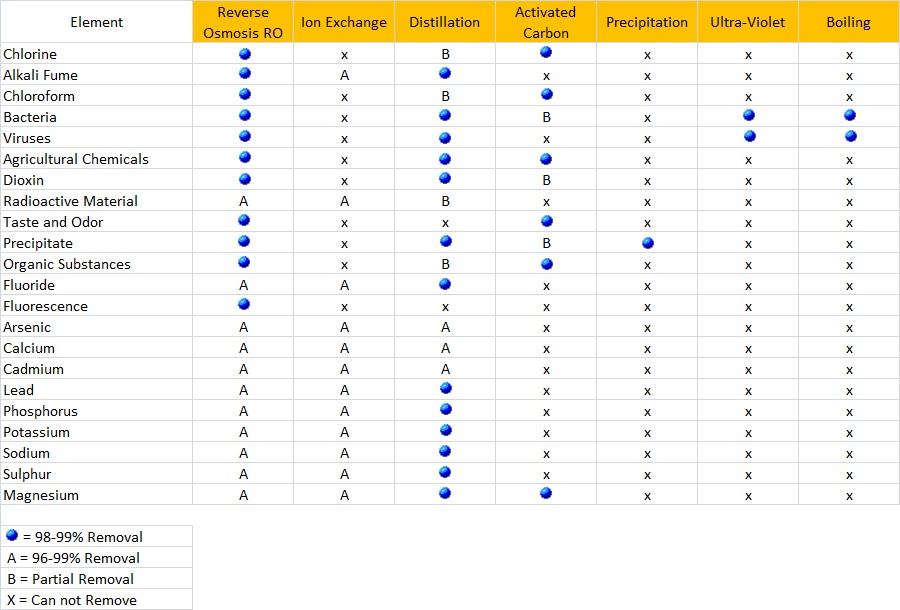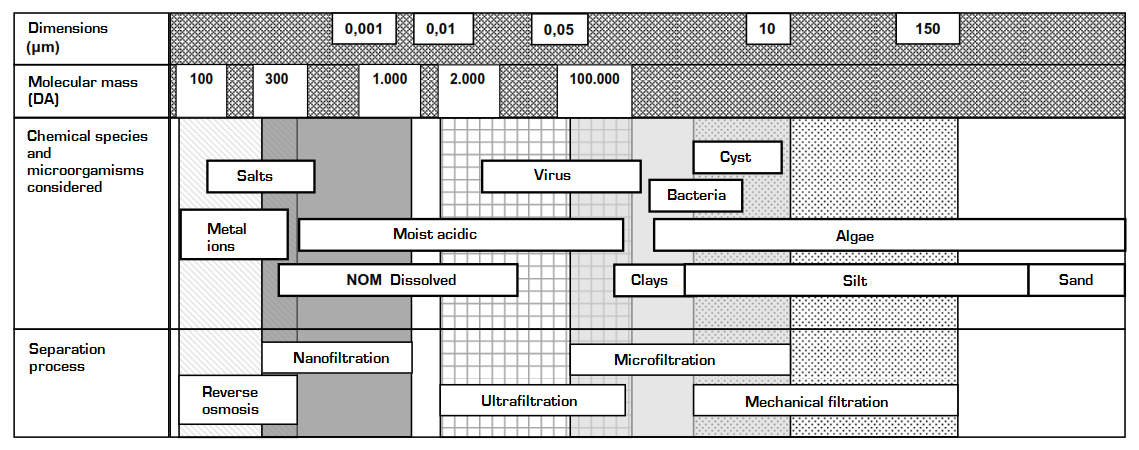CHARACTERISTICS OF FILTRATION SYSTEMS
In filters of reverse osmosis water is forcibly conducted, arising its pressure, through a spillproof membrane thoughout which only certain substances in certain quantities can pass. It is the most efficient filtration system, acts on heavy metals, nitrates and other undesirable substances, it also acts on the water hardness.
THE REVERSE OSMOSIS
The principle of osmosis is known from the early years of the last century, it is the principle that the mineral salts liquid retention winning atmospheric pressure, even through obstacles that may provide resistance, such as semi-permeable materials.
This principle allows the cells of our body to eat properly, in fact, they are covered with a semipermeable membrane, which allows you to filter the food and minerals they need and excrete substances not used. In nature, osmosis occurs, when two solutions of varying salt concentration, are separated by a semipermeable membrane: the solution with a lower concentration of salt passes through the membrane and goes to dilute the solution with increased salt concentration (Figure A).
By reversing this process, you get the reverse osmosis: pushing pressure with a saline solution against a semipermeable membrane, separation is obtained of the pure water from the impurities that are not able to pass through the micropores of the membrane (figure B).
The reverse osmosis principle, therefore, is to force the water through a semipermeable membrane, in order to separate the substances of organic and inorganic origin dissolved in it.
While having micropores, the reverse osmosis membrane should not be considered as a common filter. The traditional filter has a filtration degree of the lowest and therefore does not allow the arrest of inorganic substances and is designed to retain the impurities within it. The reverse osmosis membrane, however, besides having a higher degree of filtration, is constructed in such manner that the bacterial substances that do not pass through it is expelled.


SOME TIPS FOR CHOOSING THE RIGHT REVERSE OSMOSIS FILTRATION SYSTEMS
The reverse osmosis devices must observe the following conditions:
a) the operation must be fully automatic
b) there must be a device capable of ensuring the non returning of the water to the exhaust;
c) membranes and other components of the system in contact with the water must meet the requirements prescribed for materials intended to come into contact with food and beverage;
d) if a collection tank of the downstream treatment is provided, the plant must be equipped with a system for continuous disinfection, preferably chlorine or its compounds, or by the use of ray lamps U.V.;
e) when the arrangements for continuous disinfection are different from those above-report, such rules must be approved by the Ministry of Health on the basis of compliance with the experimental protocol.
f) in the pretreatment of the waters covered by the process of reverse osmosis activated carbon filters and microfilters are allowed;
g) substances used in retreatment must meet the standards requirements of purity required for usage in the food or drinking water treatment.
Read the characteristics of WAS


 English
English Italiano
Italiano 
